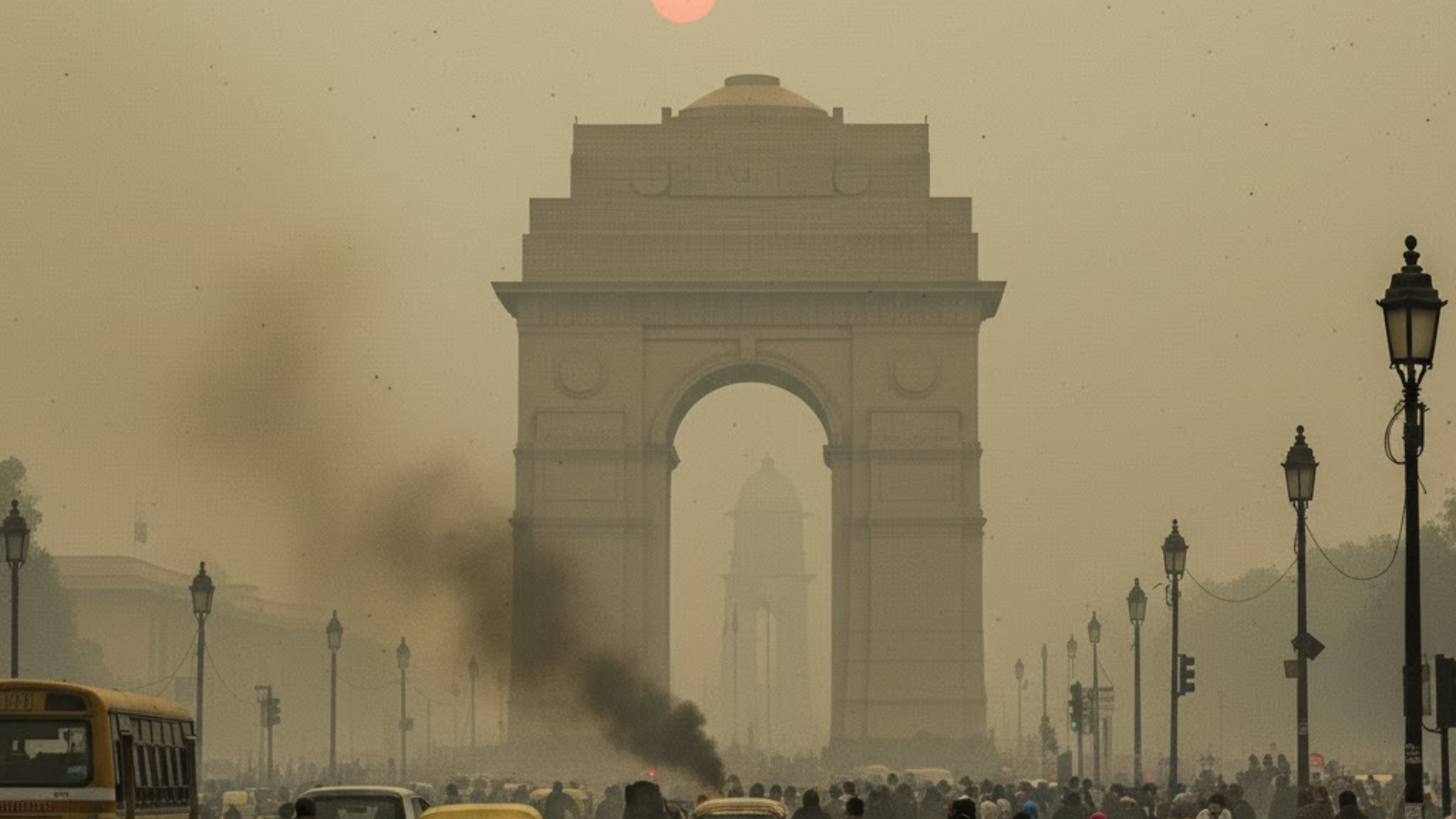Delhi Wakes Up to Poor Air and Morning Mist, AQI Touches 210
Delhi woke up to another hazy morning on Wednesday as the city’s air quality remained in the ‘poor’ category for the second consecutive day, recording an Air Quality Index (AQI) of 210, according to data from the Central Pollution Control Board (CPCB). On Tuesday, the AQI stood at 201, marking a steady decline in the capital’s air quality.
According to the India Meteorological Department (IMD), the minimum temperature settled at 18.3°C, which is 1.3 degrees below normal, while the maximum temperature is expected to hover around 33°C. The IMD also forecast “mist and haze” in the morning hours followed by mainly clear skies later in the day.
The relative humidity was recorded at 89% at 8:30 am, indicating high moisture levels that, when combined with pollution, contribute to a dense haze across the city.
As per CPCB guidelines, an AQI between 201 and 300 falls in the ‘poor’ category, indicating that prolonged exposure could affect sensitive groups such as children, the elderly, and those with respiratory conditions.
Environmental experts warn that with Diwali approaching and winter setting in, pollution levels are likely to worsen due to stubble burning, vehicular emissions, and reduced wind speed. Authorities have urged residents to limit outdoor activities during peak pollution hours and use masks when stepping out.
With the festival season beginning and weather conditions turning stagnant, Delhi’s battle with smog and pollution seems poised to intensify unless preventive measures are enforced promptly.

According to the India Meteorological Department (IMD), the minimum temperature settled at 18.3°C, which is 1.3 degrees below normal, while the maximum temperature is expected to hover around 33°C. The IMD also forecast “mist and haze” in the morning hours followed by mainly clear skies later in the day.
The relative humidity was recorded at 89% at 8:30 am, indicating high moisture levels that, when combined with pollution, contribute to a dense haze across the city.
As per CPCB guidelines, an AQI between 201 and 300 falls in the ‘poor’ category, indicating that prolonged exposure could affect sensitive groups such as children, the elderly, and those with respiratory conditions.
Environmental experts warn that with Diwali approaching and winter setting in, pollution levels are likely to worsen due to stubble burning, vehicular emissions, and reduced wind speed. Authorities have urged residents to limit outdoor activities during peak pollution hours and use masks when stepping out.
With the festival season beginning and weather conditions turning stagnant, Delhi’s battle with smog and pollution seems poised to intensify unless preventive measures are enforced promptly.
Next Story